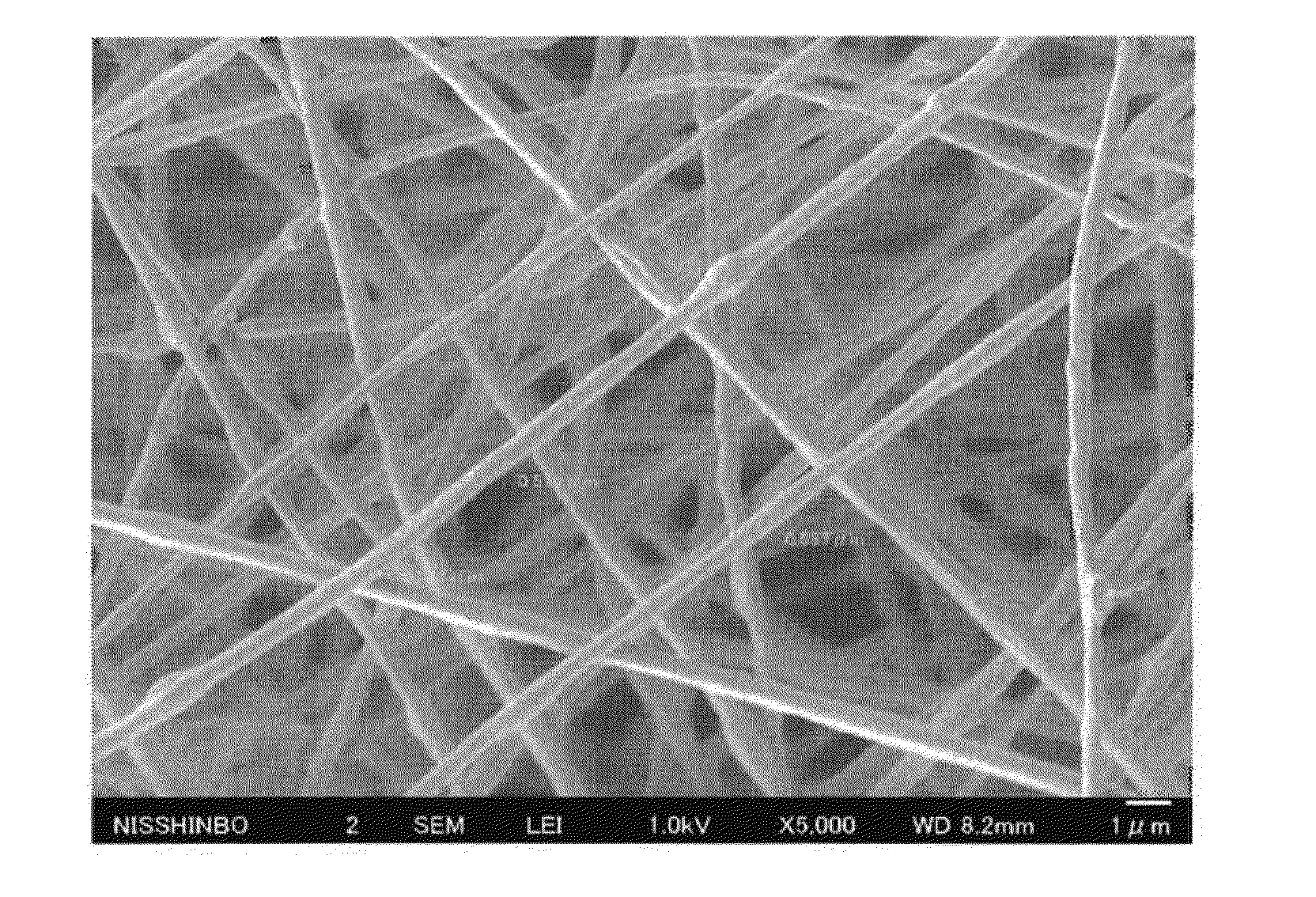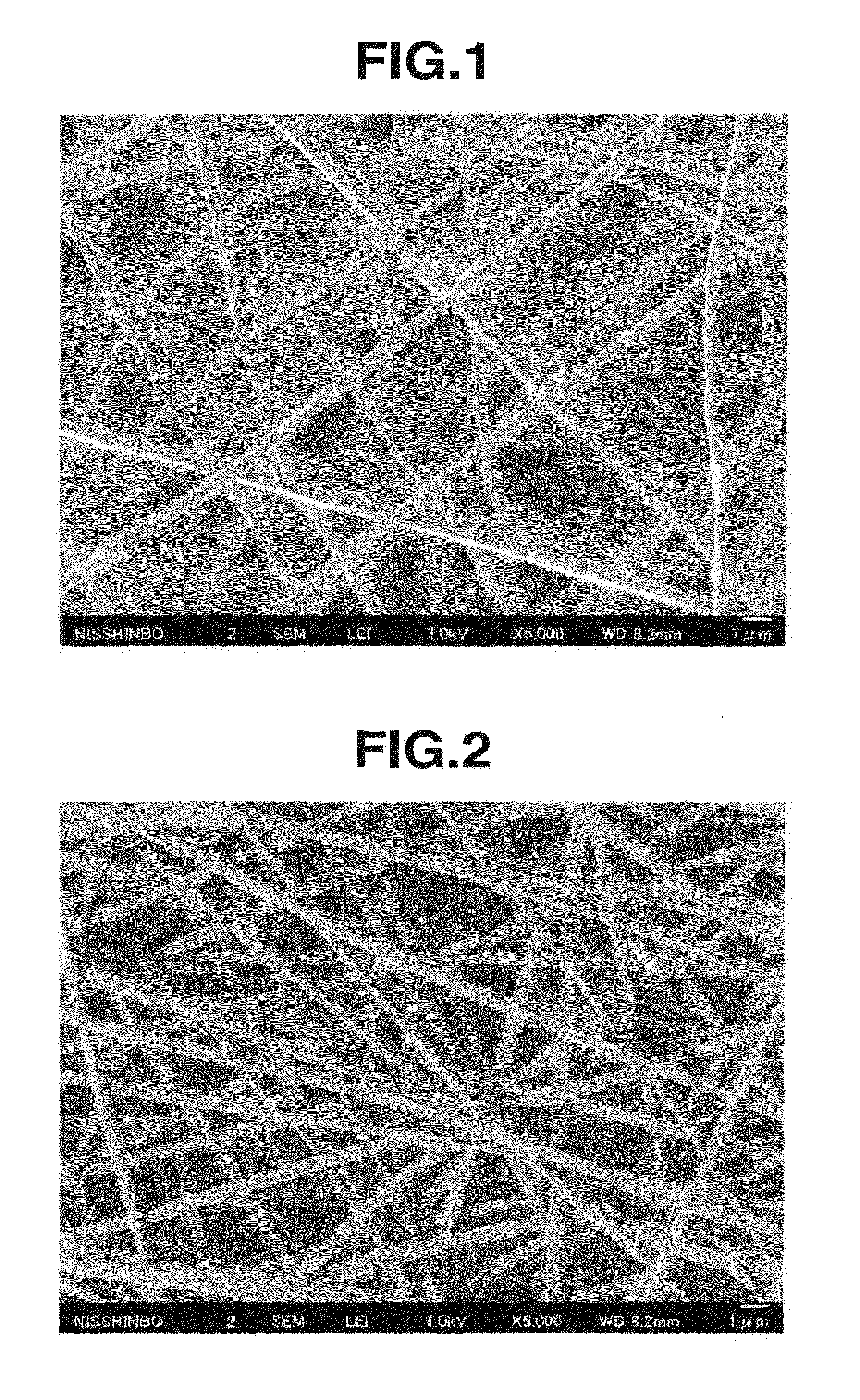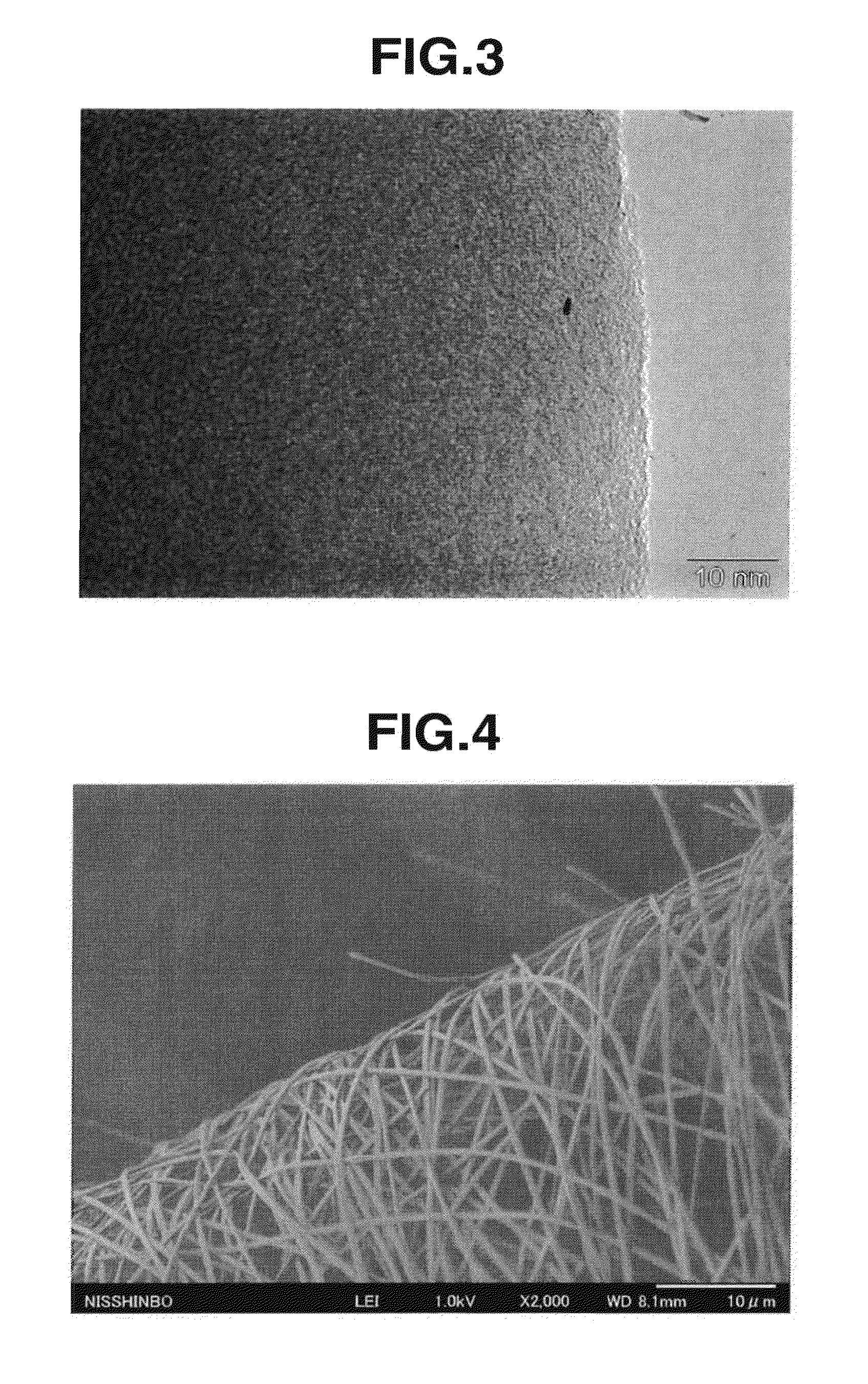Flexible carbon fiber nonwoven fabric
a non-woven fabric, flexible technology, applied in weaving, cell components, electrochemical generators, etc., can solve the problems of inability to use alone to form such components, brittle fabric, lack of processing strength, etc., to achieve good processing ability, good resistance to bending, and simplified production operation
- Summary
- Abstract
- Description
- Claims
- Application Information
AI Technical Summary
Benefits of technology
Problems solved by technology
Method used
Image
Examples
example 1
(1) Preparation of Electrospinning Dope
[0088]An electrospinning dope was prepared by mixing together and dissolving 2.7 wt % of polyacrylonitrile (abbreviated below as “PAN,” available as “Barex” from Mitsubishi Chemical Corporation), 3.0 wt % of phenolic resin (abbreviated below as “Ph,” available as “PSK-2320” from Gunei Chemical Industry Co., Ltd.) and 3.5 wt % of titanium(IV) butoxide (available from Aldrich Co.) in 90.8 wt % of dimethylformamide (available from Wako Pure Chemical Industries, Ltd.; guaranteed reagent).
(2) Electrospinning
[0089]The electrospinning dope obtained as described above was set in an electrospinning system (ESP-2300, manufactured by Fuence Co., Ltd.) and electrospun at a needle outlet diameter of 0.5 mm, an applied voltage of 17 kV, an extrusion pressure of 7 kPa and a relative humidity of 50% (25° C.), thereby forming an ultrafine fiber nonwoven fabric built up of filaments having a diameter of about 600 nm.
(3) Thermosetting (Infusibilizing) Treatment
[0...
example 2
(1) Synthesis of Polyacrylonitrile-Polymethacrylic Acid Copolymer
[0098]A flask was charged with 30.93 g of acrylonitrile (available from Wako Pure Chemical Industries, Ltd.), 4.07 g of methacrylic acid (Wako Pure Chemical Industries) and 300 mL of pure water, following which deaeration (oxygen removal) was carried out by bubbling through nitrogen gas. The flask contents were then heated to 70° C., following which a solution of 100 mg of potassium peroxodisulfate (Wako Pure Chemical Industries) dissolved in 50 mL of pure water was poured in under stirring. Stirring was continued for 4 hours, after which the cloudy solution was concentrated and finally dried in vacuo, giving about 20 g of a polyacrylonitrile-polymethacrylic acid copolymer (referred to below as “PAN-MAA”).
(2) Preparation of Electrospinning Dope
[0099]An electrospinning dope was prepared by mixing together and dissolving 1.5 wt % of the PAN-MAA obtained as described above, 1.5 wt % of Ph and 0.4 wt % of titanium(IV) tetr...
example 3
(1) Preparation of Electrospinning Dope
[0107]An electrospinning dope was prepared by mixing together and dissolving 15 wt % of PAN, 15 wt % of Ph and 4.0 wt % of titanium(IV) tetrachloride (Aldrich Co.) in 66 wt % of dimethylformamide (Wako Pure Chemical Industries; guaranteed reagent).
(2) Electrospinning
[0108]Electrospinning was carried out under the same conditions as in Example 1, forming an ultrafine fiber nonwoven fabric built up of filaments having a diameter of about 15 μm.
(3) Consecutive Thermosetting and Firing (Carbonizing) Treatment
[0109]Heat treatment was carried out under the same conditions as in Example 2, giving an ultrafine carbon fiber nonwoven fabric.
[0110]The resulting ultrafine carbon fiber nonwoven fabric was examined under an electron microscope, from which it was confirmed that the fibers had not melted together and united. The fiber diameter was about 10 μm. The nonwoven fabric had a thickness of 20 μm.
PUM
| Property | Measurement | Unit |
|---|---|---|
| Percent by mass | aaaaa | aaaaa |
| Percent by mass | aaaaa | aaaaa |
| Volume | aaaaa | aaaaa |
Abstract
Description
Claims
Application Information
 Login to View More
Login to View More - R&D
- Intellectual Property
- Life Sciences
- Materials
- Tech Scout
- Unparalleled Data Quality
- Higher Quality Content
- 60% Fewer Hallucinations
Browse by: Latest US Patents, China's latest patents, Technical Efficacy Thesaurus, Application Domain, Technology Topic, Popular Technical Reports.
© 2025 PatSnap. All rights reserved.Legal|Privacy policy|Modern Slavery Act Transparency Statement|Sitemap|About US| Contact US: help@patsnap.com



